 Thank you for visiting HOJO website. If you have any enquiry, please feel free to get in touch with us at
Thank you for visiting HOJO website. If you have any enquiry, please feel free to get in touch with us at
▼ Akira Hojo
▼ Hojo Newsletter
▼ HOJO FACEBOOK





HOME > Oolong Tea > Oriental Beauty


Once upon a time, Oriental Beauty was originally called as Formosa Tea among the Europeans. In the past, this tea was very popular and people enthusiastically looked for it. At that time, it was said that 15kg of Oriental Beauty was equivalent to the cost of a house in Taiwan. The reason why people love this tea is because of its sweet fruity flavor. The secret of this flavor is caused by tiny green flies that attack the tea leaves beginning early summer onwards. The tea leaves that were bitten by green flies will change into yellow in color and the tea leaves produce an antibody which gives a fruity flavor. It is a very tedious work to only select and pluck the leaves attacked by green flies. Not only the tea garden has to be maintained without using Pesticide, it needs a lot of good luck to get this tiny insect flown down.
Once upon a time, legend has it that a farmer left his tea garden as he was too busy to look after it. His tea garden was terribly attacked by a large number of green flies. All the bitten tea leaves changed into yellow in color. Nevertheless, he still processed the tea leaves as he could not afford to give up his tea. To his surprise, the tea processed from insect bitten leaves gave a very strong fruity flavor. Coincidentally, a European tea merchant noticed this tea. He loved its quality very much and named it as Formosa Tea. It is believed that this is the prototype of Oriental Beauty. However it is slightly different from the conventional Oriental Beauty. The processing method of Oriental Beauty is changes year after year. According to the older generation, during their young age, the method of making Oriental Beauty was quite different. In any case, there is no change in plucking of tea leaves. They only select the leaves that are attacked by green flies. Usually each twig consists of one bud and two leaves.
Oriental Beauty is only made from the tea leaves that are attacked by the green flies flown down which appear during June to July. Due to the increasing demand of this tea, China started to produce the tea which shares the same name, yet you can hardly enjoy the identical muscatel flavor of Oriental Beauty. In Taiwan, it depends very much on luck whether the green flies return to the same tea garden. Farmer has to keep his tea garden as natural as possible with the hope that green flies will return this year.
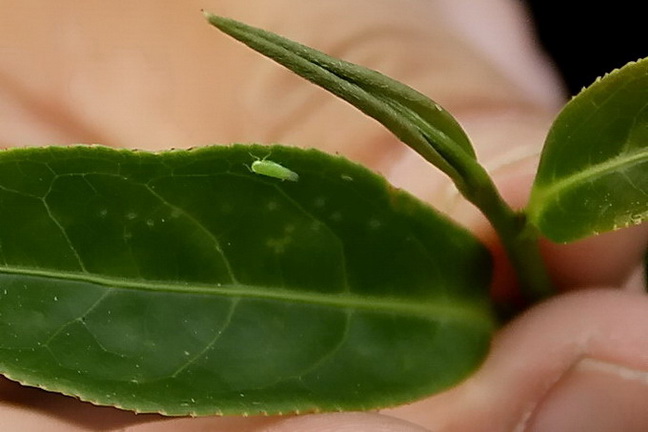
Tea garden is located in Xin-zhu (新竹县 ). The altitude is about 1000m a.s.l. Tea garden gets sun shine only in the morning whereas from the afternoon onwards, the entire tea garden is covered by a thick fog. Due to the fog and higher altitude, the taste and flavor of the tea is very thick and it gives a very smooth drinking feeling.
Oriental Beauty is made from the cultivar called青心大冇. During June to July, many green flies attack the tea garden located on top of the mountain. The green fly likes to suck the juice of young leaf and those leaves attacked by green fly will changes its color into yellow. It is said that the tea garden sometimes emits a sweet fragrance caused by the leaves that have been attacked by the green flies.
The mechanism of formation of the mysterious fragrance is yet to be fully revealed. We assume that the tea leaves attacked by these insects will subsequently produce some kinds of antibody. Usually the antibody of plant is called Phytoalexin. It is known that there is a type of Phytoalexin which gives a fruity aroma. It is a small molecular substance called terpenoid. We wonder if this substance has anything to do with the flavor of Oriental Beauty.
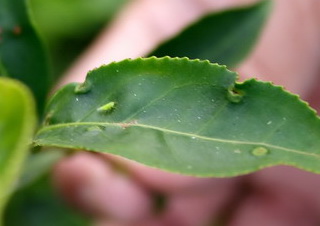

Plucking is carried out to select only the tea leaves which have been attacked by green flies. Only one bud and two leaves are carefully plucked by hand.
After plucking, the tea leaves are spread over the ground under the natural sunshine. It is called Sunshine Withering. Usually clouded weather is ideal to grow this tea in order to avoid excessive damage to the tea leaves. If the sunny weather continues, a black cloth is used to cover the tea leaves to block out the harsh rays of sunshine. With sunshine withering, moisture inside the tea leaf gets evaporated and fermentation is moderately triggered. The tea leaf will gradually start releasing a refreshing aroma.
The method of fermentation for oolong tea is completely different from that of black tea. After the sunshine withering is completed, tea leaves are conveyed into the factory and spread over a sheet. The tea leaf used for Oriental Beauty consists of only single bud and two leaves, which is different from that of ordinary high mountain oolong tea whereby 4 to 5 leaves are required. In making the Oriental Beauty, as the moisture content of tea leaf is generally higher than ordinary high mountain tea, the withering process of Oriental Beauty takes a much longer time. With a longer withering period, it accelerates hydrolysis and oxidation process which will in turn generate the typical sweet flavor and taste of Oriental Beauty. The tea leaves are then tossed onto a bamboo tray. This agitation and tossing, causes friction which in turn causes the tea leaves to start fermentation. The tray is then placed on a rack and these processes are repeated several times. This is called fermentation. Tea leaves gets oxidation mediated by the oxidative enzyme when the tea leaves get bruised. The fermentation of Oriental Beauty takes a longer time than that of ordinary oolong teas. As the tea leaves are tender and fragile, the process is carried out in a very gentle manner. Once the tea master finds that fermentation is sufficiently achieved, the tea leaves are then sent for heat treatment in order to arrest further fermentation. If this is not carried out swiftly, the tea leaves will keep on fermenting and it will finally turn into black tea.
The number of rotation and timing of fermentation is judged based on the moisture content, flavor and color of tea leaves. This decision requires top-notch experienced tea technicians and it affects the quality of tea tremendously. All technicians follow the instruction of a tea master. In order to get good quality tea, we need to pick out an excellent tea master.
At first, tea leaves are rolled by a rolling machine. For Oriental Beauty, the bag rolling is not carried out so as to protect the tea leaves from cracking. Strong rolling process may destroy the tea leaves and it causes bitterness, astringency and impure taste. Thus rolling process is traditionally conducted under moderate pressure and motion. During the rolling process, the temperature of tea leaves drop and it become brittle. The tea leaves are then heated in a drum at 60-80 degree Celsius to soften it. If the pressure of rolling is too hard, tea leaves will generate a different taste; on the other hand, if it is too soft, tea leaves gives much weaker taste. The same sequence is repeated several times. Each parameter is varied depending on the condition of tea leaves such as the moisture content. The skilled tea master has to carefully examine the condition of tea leaves and apply the suitable method in each process. It requires a great deal of precision and expertise.
After this rolling process is completed, the tea leaves are dried and this will reduce the moisture content down to 5%.
Oriental beauty should be kept in ambient environment. It is not necessary to store under cold temperature. The longer period Oriental Beauty is kept under storage, the more it gets matured. Its taste becomes smoother and gives a more elegant fruity flavor. Humidity and contamination of odor from other stuffs should be avoided at all costs. In addition, store in a dry place and avoid direct sunshine.
Tea leaves shows five colors, namely red, white, yellow, green and brown. Tea leaves which contain more white bud indicate good quality. The high end quality is made from the leaf that was extensively attacked by green fly. Usually those leaves tend to be very weak does not stay intact on its twig, but drop off.
Good quality tea consists of tea leaves with consistent size and shape. The same shape indicates that good technique in tea making process and good material is used.
There is no foreign material such as fiber, bamboo, piece of wood, sand or stone.
It generates a very strong fruity flavor that is called Muscatel. This flavor lasts up to several brewing.
Bright and transparent, in golden yellowish and orangey color.
It is very smooth, mellow and has a sweet after taste.
Tea leaf consists of 1 bud and 2 leaves. Usually, high end quality tea has loose leaves as the leaves are extensively attacked by insect which in turn weakens the tea leaves and easily drop off. The size of twig must be smaller which indicates an early batch of harvesting. The tea leaves harvested in the late season are much bigger and the intensity of flavor is weak.
The characteristics of Oriental Beauty are the fruity flavor, a very smooth drinking feeling and sweet after taste. Many customers are afraid of brewing oolong tea as it seems very difficult. However it is not that difficult once you understand the theory.
At first, bring the cool water to boil. Use soft water for preparation of tea. The water processed by distillation or reversed osmosis is not suitable for brewing tea. These water contains no minerals and it will cause tea to become tasteless. If normal tap water is used, it is advisable to use a filter. Boil the water just before brewing tea. It is very important to boil water so as to evaporate the chlorine and other types of contaminated substance in the water. Do not continue boiling for more than a few minuets as it will rather concentrate the mineral and the character of water may be converted to hard water.
The important point for brewing oolong tea is:
1) Use boiling water. 2) Avoid drastic decrease of water temperature. The sweet taste of green tea comes from the substance called amino acid which can dissolve in the water at a lower temperature. Therefore, low temperature is applied only for green tea. On the contrary, the taste of oolong tea comes from poly phenol and its oxidized substances. Those substances could only dissolve in the water at high temperature. In other word, you would not enjoy the real taste of oolong tea if it is brewed at a lower temperature. The taste of oolong tea very much depends on the brewing method.
Go to further information about suitable water for brewing tea >>
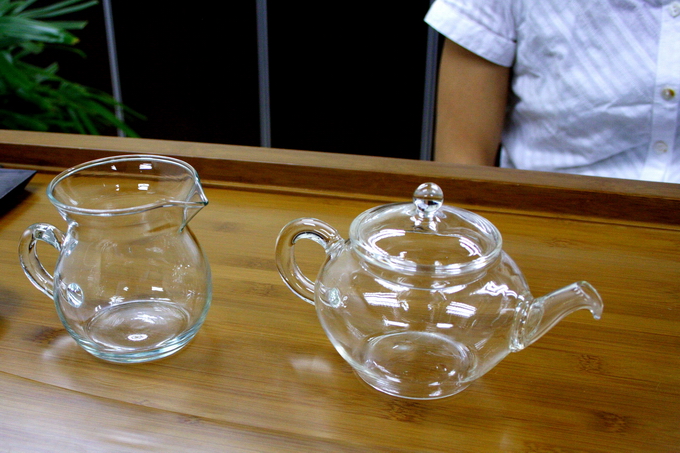
Use a glass or porcelain tea pot. It is important not to share the same clay tea pot which has been used for other oolong teas or Pu-Erh tea.
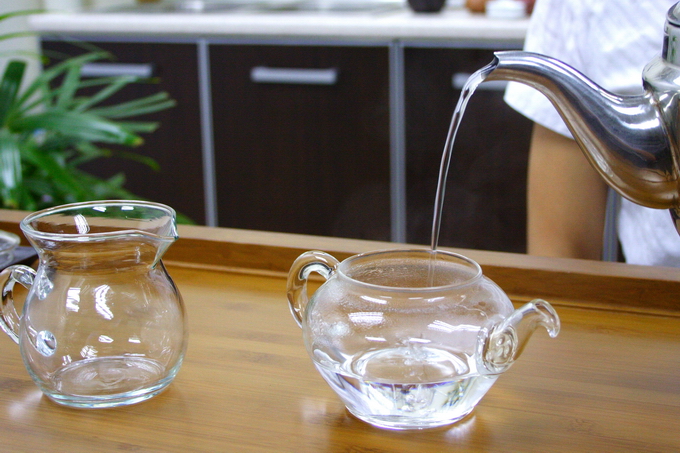
Pour hot water into the tea pot and fill up to 70%. This is to heat up the tea pot. If the pot is not warmed up, the temperature of water will drops drastically.This will affect the taste and flavor of tea.
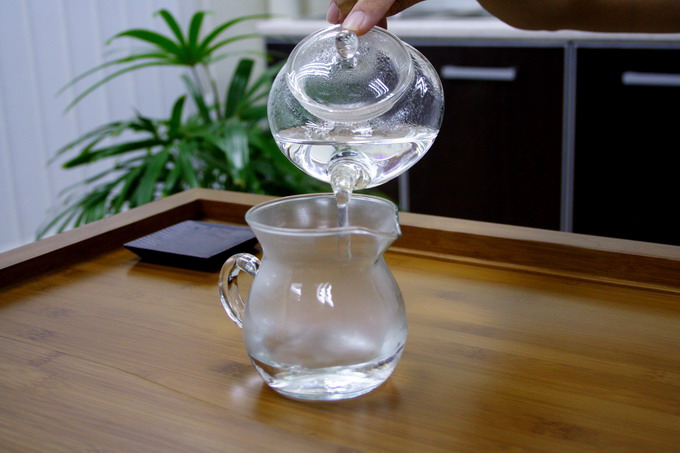
After 20 seconds, remove hot water from the tea pot.
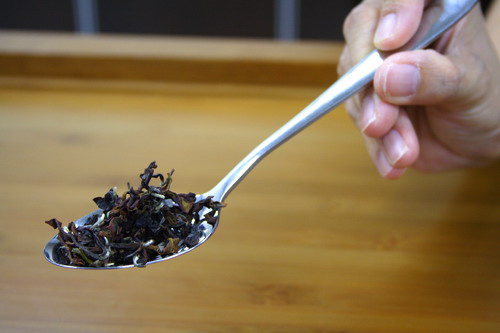
Usually 1g is equivalent to 25ml of water. For the small tea pot of 200ml, about 6g of tea leaves is sufficient, which is equivalent to 2 table spoons.


Place the tea leaves into the warmed tea pot. It is important not to touch the tea leaves in order to avoid the contamination of odor.
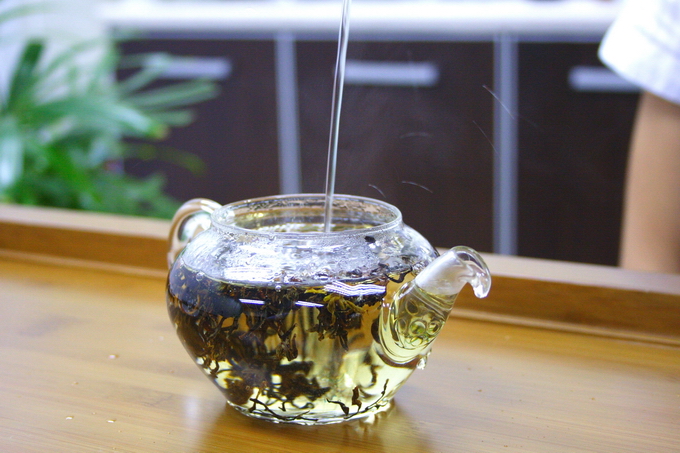
Pour in the hot water. Try not to agitate tea leaves to maintain delicate taste. Use hot water which is at 80 degree C.
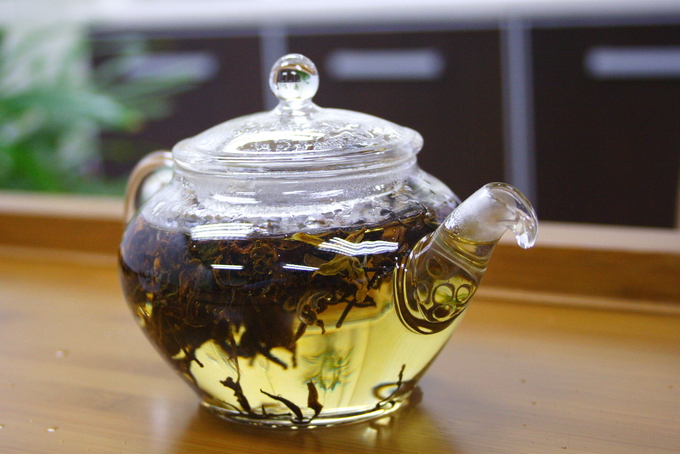
Gently place the lid and leave it for 2 mins and 1min for 2nd brewing.
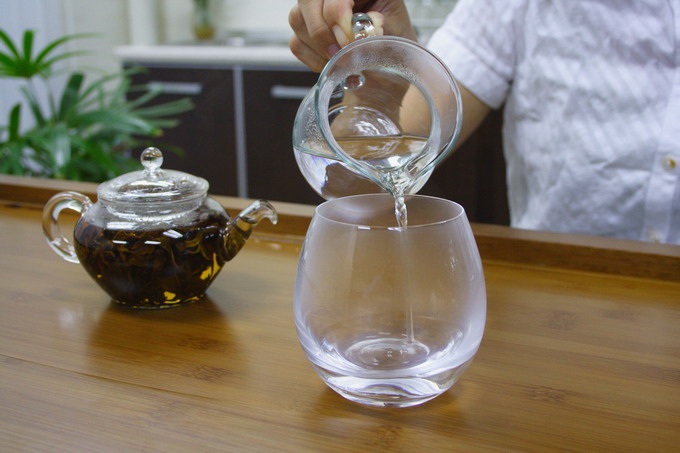
In the mean time, pour off the hot water from the pitcher into the glass or tea cup to warm it up.
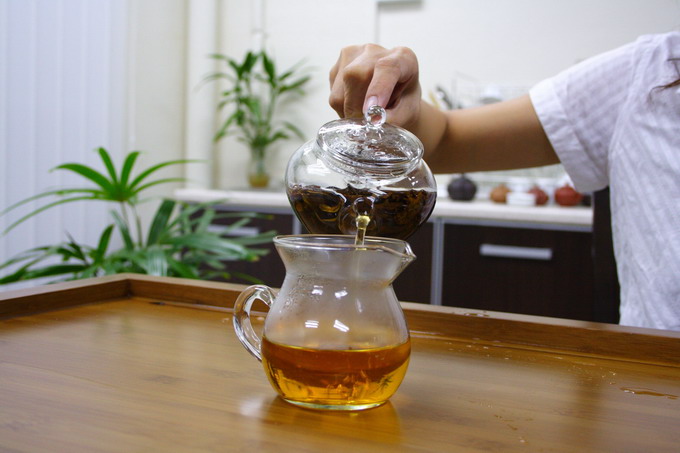
Pour tea into the pitcher. Using pitcher, the concentration of tea is equalized at once.
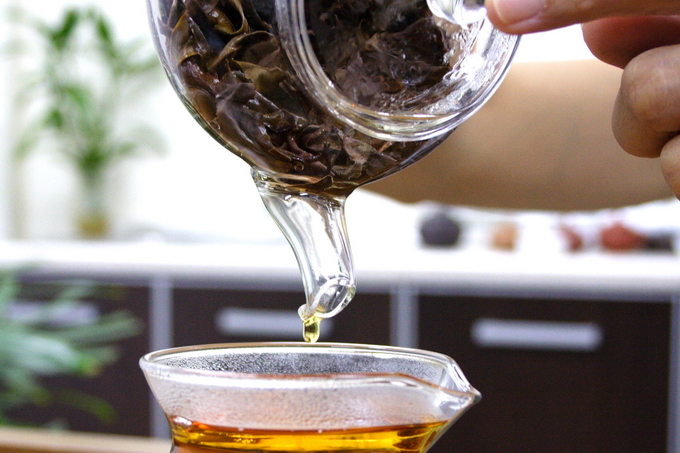
Pour tea into a pitcher completely until the last drop which is most concentrated. It is important to enjoy the following brewing.

Pour out the hot water from the glass.
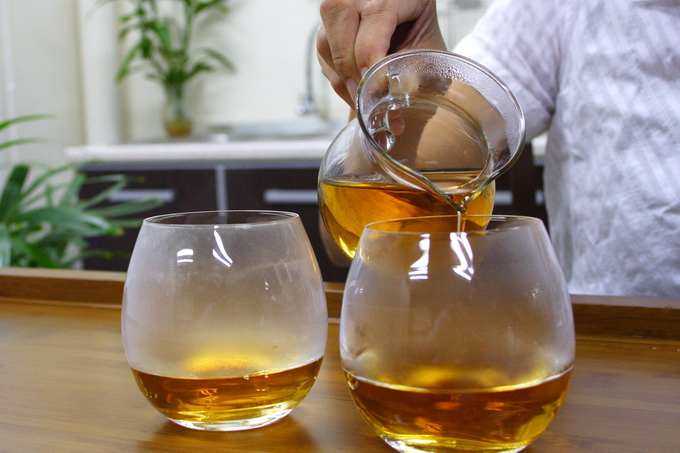
Pour tea from the right end which is supposed to be served for the guest. The one on the left is for the host.

For this exclusive tea, serving with a lesser quantity is better as you could truly enjoy its flavor.
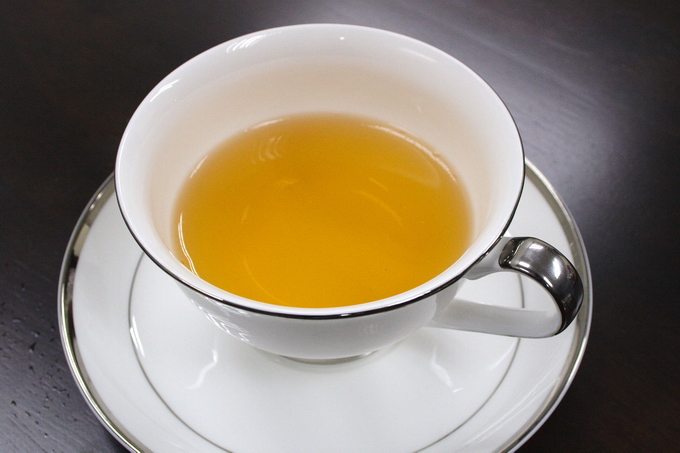
Here we introduce the serving using a glass. It is also nice to use the English tea cup or China tea ware.
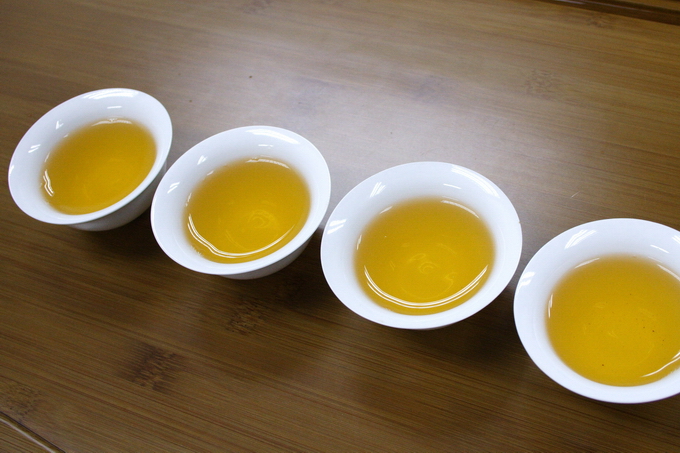
This is the right color of Oriental Beauty. If the color becomes orange, it indicates that brewing temperature is a little too high.
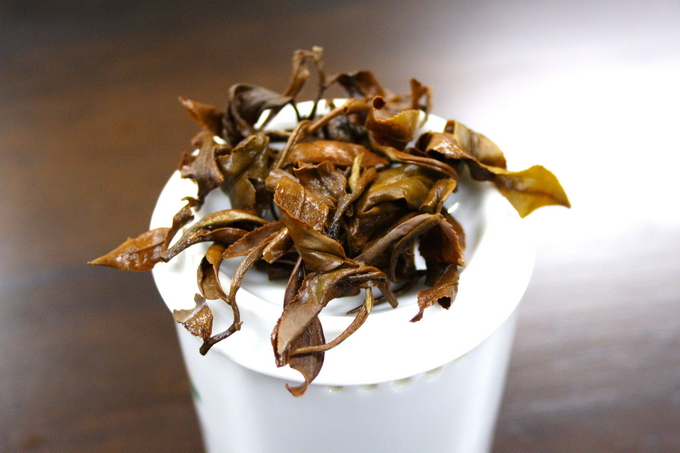
The leaves shown here lies on the professional inspection cup. If the tea leaves are of good quality, the brewed leaves give a strong flavor as well. This is indicating the good material is used.
Avoid direct sunshine, high temperature and humid environment. Keep the tea leaves at a well-ventilated place. Oriental Beauty will undergo further maturation if it is being kept in an ambient atmosphere. It will be more fragrant and sweet. Usually tea leaf can be kept even more than 5 years. But it will be delicious enough after being kept for a few years. Due to the very low moisture content of tea leaves, it can easily absorb the odor from its storage environment. Therefore it is important to ensure the bag is tightly sealed.
Usually further maturation of tea leaves will increases its flavor and sweet taste while its aroma becomes weaker. In Taiwan, Oriental Beauty that has been kept for a long period of time is highly priced.
If you wish to maintain its taste as when you purchase, the tea leaves has to be kept in the fridge. Due to the low temperature, tea leaves do not undergo further maturation and you can enjoy the same taste, aroma and flavor for a longer time. In addition, it is important to ensure the bag is tightly sealed to avoid cross contamination of odor from the environment. Before opening the bag, it is better to warm it up so as to avoid condensation.

 |
We accept various kinds of credit card through Paypal.
Only if customer prefer other option of payment, we suggest "Bank Transfer".
Various choice of shipping method
EMS, SAL, Small Packet, Small Packet (SAL) Yamato Express and Surface
For shipping tea, we usually suggest small air parcel, the estimated shipping cost of tea in 100g (with wrapping material ) is
Small Parcel
USA JPY 600, EU JPY600 and Asia JPY470
Small Packet (SAL)
USA JPY380, EU JPY380 and Asia JPY320
The shipping fee to oversea by small air parcel happens to be even cheaper than domestic shipping fee in Japan.
For your information, some countries, EU in particular imposes custom duty. We need buyer to bare the duty. We are sorry, but we cannot change the amount on the invoice, and we do not mark any packages as gifts. We will strictly follow the custom regulation.